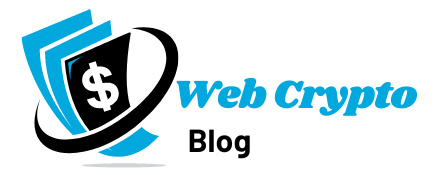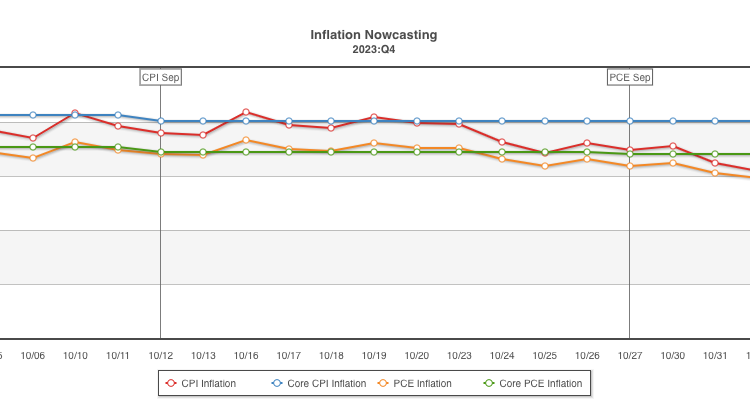So much of the world’s economic steam depends on interest rates, which in turn are tied to inflation, i.e., the rate at which producer and consumer prices are rising.
But measuring inflation isn’t easy. It is as much art as it is science.
The world’s number one inflation index, arguably, is the United States Bureau of Labor Statistics (BLS) Consumer Price Index (CPI), which has been around for over 100 years.
Not all economists and business leaders are happy with the CPI, however. Its methodology sometimes seems antiquated, and it publishes only once a month. It also relies on a workforce of 477 people who canvas supermarkets, department stores, gas stations and hospitals, often simply jotting down retail prices — not exactly 21st century.
“Basically, they go to stores — whether it’s electronically or in person — and write down prices,” Nationwide insurance chief economist David Berson told Marketplace. “They compare those prices to a month earlier.”
This may be why Truflation.com, a blockchain-based inflation index, is now attracting some attention. It gathers digital data from some 40 “partners” or sources that collectively offer up to around 18 million data points, compared with the CPI’s relatively modest 80,000 data points. Truflation also has a United Kingdom version.
The new inflation index is also updated daily. If rising consumer prices are finally plateauing or beginning to drop, it should be able to pick up changes earlier than the government gauge.
Economist Paul Krugman wrote in a New York Times column in late October: “I’ve been having some fun with a project called Truflation, which supposedly uses the blockchain and was backed in part by crypto types and which I suspect was intended to show that official inflation was greatly understated. What its numbers actually show is a steep decline in inflation over the past year.”
Never mind the dig at “crypto types” — Krugman is a noted crypto skeptic. What’s noteworthy is that this Nobel laureate was taking blockchain-based inflation analytics seriously.
Commenting on Truflation last year, David Harris, chairman of Rockefeller Capital Management, noted: “Their inflation data last fall seemed prescient, as it signaled an upturn before the BLS did. I expect more websites like this which will provide increased ways for investors to assess inflation trends.”
Elsewhere, Base Ecosystem Fund, which invests “in the next generation of on-chain projects building on Base,” Coinbase’s layer-2 blockchain, announced in September that Truflation was among its first six investment recipients out of 800 applications.
Its digital data sources include NielsenIQ, Big Mac Index, Amazon, Walmart, Zillow, Trulia, Penn State University MRI (Marginal Rent Inflation) Index, Real Capital Analytics, Yahoo, Energy Information Administration, OPIS, AAA Gas prices, JD Powers, CarGurus, Numbeo, Statista, CoreLogic, and Kantar, among others.
Cleveland Fed’s Nowcasts
Truflation isn’t the first to venture into real-time inflation prediction. The Federal Reserve Bank of Cleveland created a real-time inflation index called “Nowcasts” back in 2014, and today, the bank issues inflation forecasts each month before the official CPI or personal consumption expenditures (PCE) inflation data are released. Its index is updated every morning at 10:00 am.

The idea is to provide consumers, businesses, financial markets and others a sense of where inflation is now and “where it is likely to be in the future.” For example:
“If a consumer is thinking about taking out a loan, it helps to know how quickly wages and prices will be rising during the life of the loan — after all, it will be much easier to service the loan with stronger wage and price growth.”
The Nowcast model makes use of a small number of available data series “at different frequencies, including daily oil prices, weekly gasoline prices, and monthly CPI and PCE inflation readings,” according to the bank.
It’s had some success, claiming to be “more accurate than the consensus (average) nowcasts from the Blue Chip Economic Indicators survey” and also “more accurate than the median nowcasts from the Federal Reserve Bank of Philadelphia’s Survey of Professional Forecasters.”
A need for real-time gauges
Real-time inflation indexes like Nowcast and Truflation are long overdue, in the view of many. “There’s an important need for independent measures of inflation that are calculated more frequently than once a month,” Omid Malekan, author and adjunct professor at Columbia University’s Business School, told Cointelegraph.
Magazine: 6 Questions for Lugui Tillier about Bitcoin, Ordinals, and the future of crypto
“Today, we have millions of prices that we can observe in real-time, and there is absolutely no reason to first publish inflation data with a delay — so we can see them real-time if we want,” said Lars Christensen, an economist and associate professor at the Copenhagen Business School in a recent LinkedIn post.
The view that the BLS’ CPI is antiquated and ripe for disruption “is the main reason we founded Truflation,” the firm’s founder and CEO Stefan Rust told Cointelegraph. The new protocol tracks 18 million items with three price feeds per item, he explained, compared with the government’s 80,000 items gathered “manually,” adding:
“Rather than tracking household expenses via rotating panels, Truflation uses a census-based model to track these.”
There’s no clear “right way” to track inflation, of course, but that’s arguably another reason why new approaches might be welcomed. “There is a lot of discretion in any formulation when answering questions like how much weight to give to different goods or services,” said Malekan, adding:
“The Labor Department claims to be an independent observer, but there is a serious conflict of interest in its formula because billions of dollars in TIPS payments [which protect against inflation] and cost of living adjustments for services like Social Security ride on how we calculate inflation.”
Rust echoed this sentiment that the government’s methodology is not only antiquated but also biased, telling Cointelegraph the methodology that the government set up “is vertically integrated, biased and editable. They can change methodology and time sets on a whim while they are working with old data sets.”
A 97% correlation with the CPI
Overall, the emergence of apps like Truflation is “a very healthy development,” Danielle DiMartino Booth, CEO and chief strategist for QI Research, told Cointelegraph.
Booth, who worked at the Dallas Fed for a number of years, was among those who “stressed tested” Truflation’s model; the firm supplied her with raw data so QI could conduct a correlation analysis. Since 2012, the index’s correlation with the CPI is 97%, Booth said, which is very high.
As noted, Truflation is accessible on-chain — it’s a node on the Chainlink oracle network that feeds its inflation data into smart contracts across four blockchains: Ethereum, Avalanche, BNB Chain and Fantom. Cointelegraph asked Booth whether it mattered to her that Truflation’s data is on-chain.
“What matters to me is the end product,” she answered. Is it accurate? Does it correlate with the CPI?
Democratizing economic information
Sam Friedman, principal solutions architect at Chainlink Labs, sees things somewhat differently. Truflation’s updated inflation calculation methodology, which is verifiable, refreshed daily and is also accessible on-chain, “represents the world we live in today,” he told Cointelegraph.
The app isn’t just for economic forecasters but also for consumers looking to “understand the impact that inflation has on their lives.” Many are already attracted by the firm’s catchy online dashboard and personalized inflation calculator. Friedman said:
“This type of bottom-up education will drive adoption and is very much in line with the philosophy of decentralized systems. Of course, people who work at large institutions, SMEs [small and medium enterprises], and smaller enterprises are also consumers.”
Software developers, too, will now be able to access real-time inflation data as they design smart contracts for their decentralized applications. “They can reference Truflation with confidence as an independent data provider and help provide end-users with a cryptographic guarantee that the data has not been manipulated,” said Friedman.
Asked by Cointelegraph if Truflation envisions an audience/market beyond professional economic forecasters and institutional investors, Truflation’s Rust answered, “Yes, 100%.” He pointed out that worldwide, there were perhaps 500 million accredited investors — “but what about the remaining 8.5 billion people on the planet? “How can they get access to inflation-related information and protect themselves against inflation?”
Does Truflation really need a blockchain?
Truflation’s methodology may not absolutely require a blockchain. For some users like Booth, its on-chain availability is largely irrelevant. Still, Rust went to some pains to explain that what separates Truflation’s methodology from others is the fact that it is “transparent, continuously tested, and validated using multiple sources in real time. The blockchain allows us to achieve this.” The technology also provides immutability, censorship resistance, lower costs and “accessibility to all.”
Consider immutability. Governments can sometimes “edit up to six months of historical data and reports,” said Rust. By comparison, “once data is written on the blockchain, it’s logged forever.”
In addition, the project makes use of blockchain-enabled tokenization that significantly reduces costs. Data providers, hosting companies and software and data builders can earn Truflation tokens (TFI), “which represent their ownership and utility in the network.”
This ensures transparency in terms of governance, too, because tokenholders have voting rights in various protocol activities, including data category selection, market strategies and token rewards. This contrasts with government models, “where the government can change the methodology at the whim of an administration,” Rust told Cointelegraph.
Could it supplant the CPI?
Could Truflation’s real-time inflation index — or one like it — replace the CPI someday as the dominant inflation index?
That’s unlikely, according to Booth.
Professional forecasters like herself will still want a way to compare what is happening today with what happened in the past, and the CPI has been published regularly since the early 1920s.
It isn’t static, either. Its methodology has changed over the years, sometimes in major ways. A more likely outcome would be that Truflation is eventually integrated into the CPI, she opined.
Recent: Help or hindrance: Is Web3 really improving mainstream industry and products?
Moreover, many mainstream economists seem to be just hearing about Truflation, so it may take some time before the app gains real traction. In early September, Ed Yardeni, president of Yardeni Research, wrote in his “Quick Takes” newsletter:
“The headline CPI inflation rate was 3.2% in July. Truflation is tracking that rate at around 2.60% in August, down from July’s 2.73% tracking….”
But when Cointelegraph contacted Yardeni, a well-known Wall Street economist, he declined to comment on the new model: “I’ve just recently started to track them. So I don’t have a strong opinion about them yet,” he said.
“The ultimate test” for Truflation, according to Booth, is whether it can prove useful to practitioners whose careers depend on making accurate inflation forecasts. If it can achieve that, then it might eventually be adopted by government agencies.

